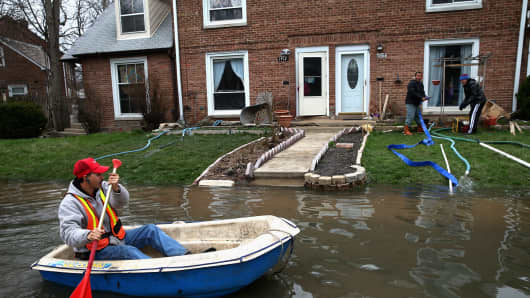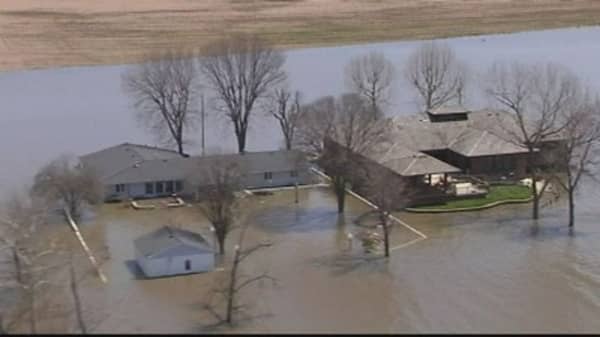But snow melt in the north from unusually late snow storms is a different story, and that bears watching, says Sean McCambridge, Jefferies Bache Commodities grain analyst. "There's a lot of snow pack across the northern Plains which hasn't melted yet. That could become a bigger issue across the Red River Valley, North Dakota and into the Canadian prairies and possibly the Mississippi River," he said. The snow is still 20 inches in some areas, and he said there could be problems if the snow melts too rapidly.
"You don't typically have that kind of snow up there this time of year. First you've got to get rid of the snow, then you've got to have it dry out," said Mittlestaedt. "It's a question of getting soil temperatures warm enough to plant."
Spring wheat planting could be impacted in those northern areas but the price isn't reflecting any concerns now, as the world is well supplied, he said. "It could affect wheat planting in Canada and the Northern Plains and it could impact some corn planting," McCambridge said.Farmers should now be preparing fields for planting.
As for the recent flooding, it hasn't affected farmers too much. "The biggest factor is it's really shut down much of the shipping until water damage recedes," he said.
(Read More: Floods to sideline Mississippi River barges at least another week )
"If all of this happened two weeks later it would be a completely different story," said Mittelstaedt. "The whole planting delay is almost meaningless, unless it continues for four or five or six weeks."
Corn and wheat prices have been in decline, and the new corn crop futures have lost more than 20 percent since the fall, Mittelstaedt said. Year-to-date, corn futures are down 11 percent and wheat is down more than 12 percent.
(Read More: GRAINS-Corn falls for second day as US crop prospects to improve )
"We had the huge quarterly grains stocks report on March 28 which really got everything going. That was a big report for the market. We had this really tight supply concern for corn and beans and that report eased those conditions significantly," said Mittelstaedt. "We had more in storage than we thought."
A big crop is expected to be planted this year. "It looks like it could be a massive crop if we get any kind of normal weather," he said. "You had a two-fold punch. what led to the rally last summer was that big summer drought. Demand for corn partially never really materialized. Right now, we have the prospects of a huge crop coming this fall and likely lower prices.





